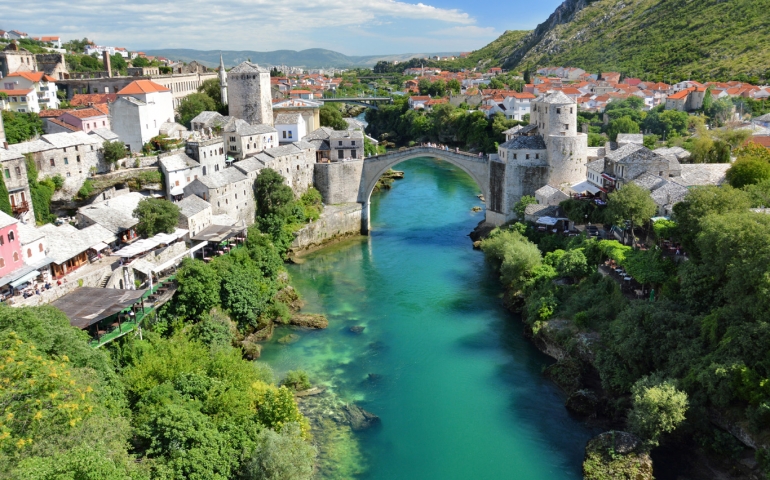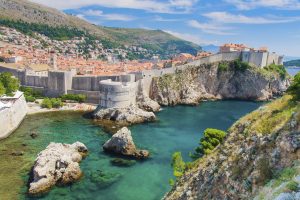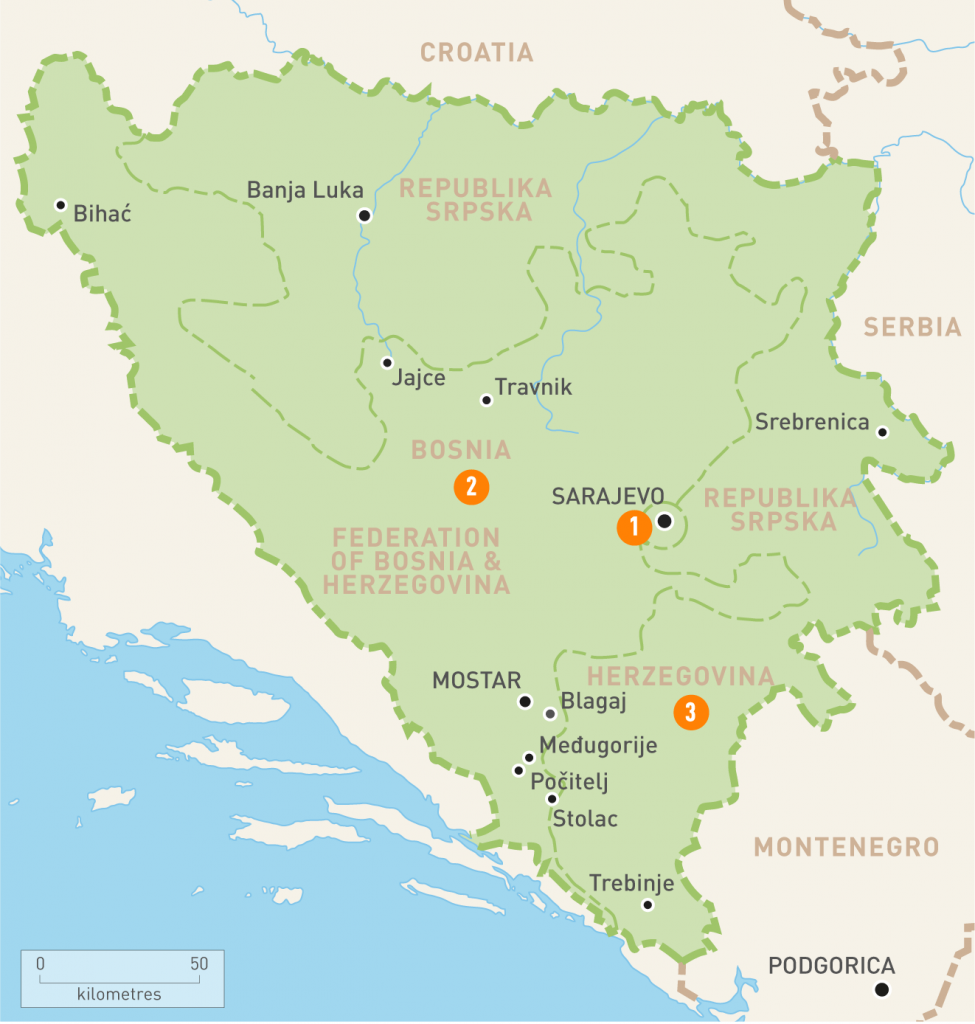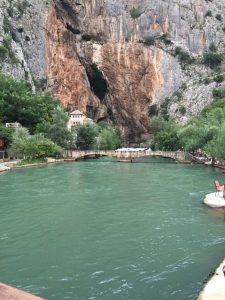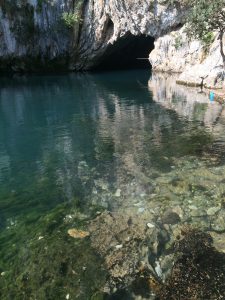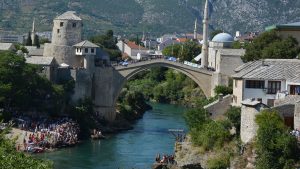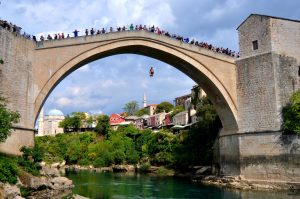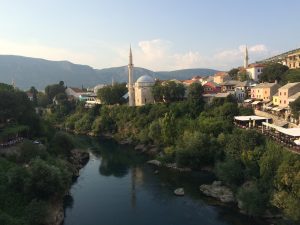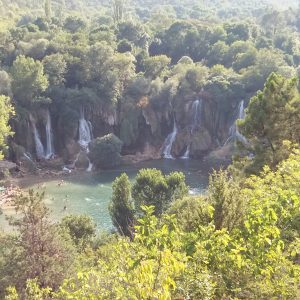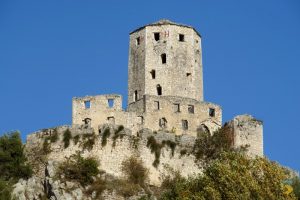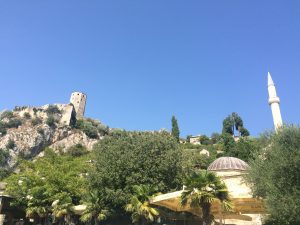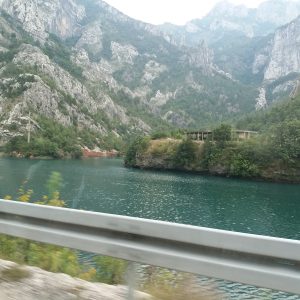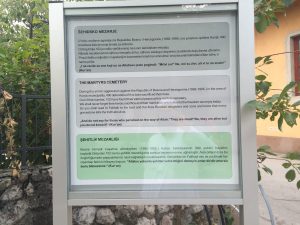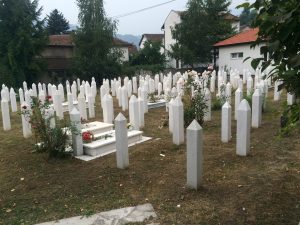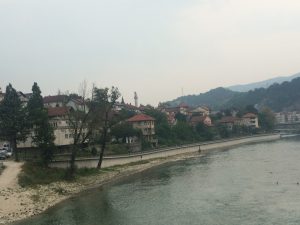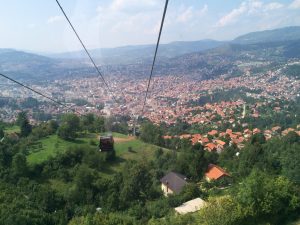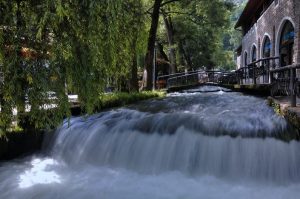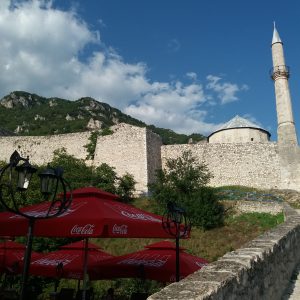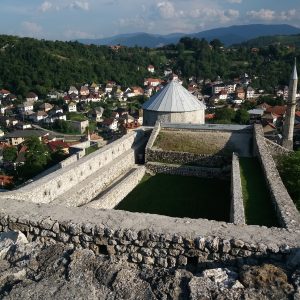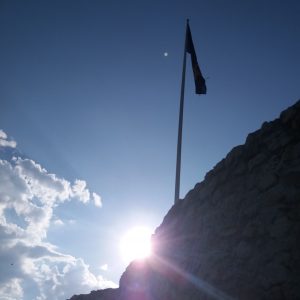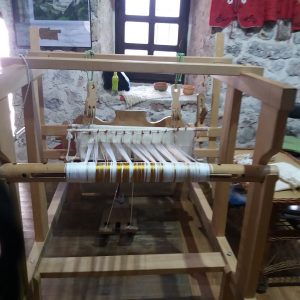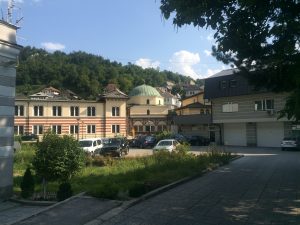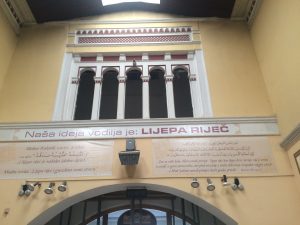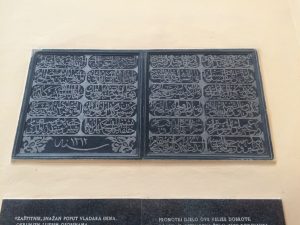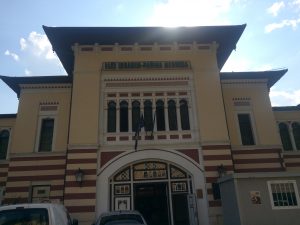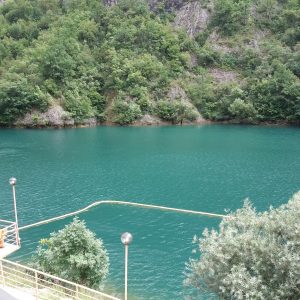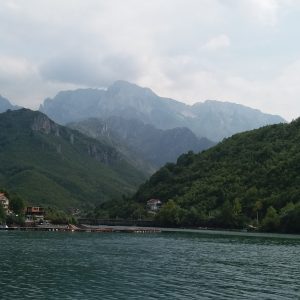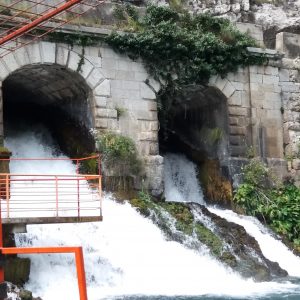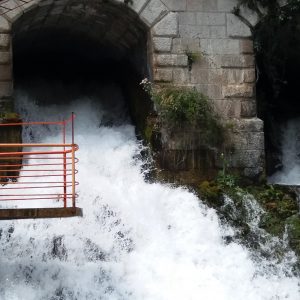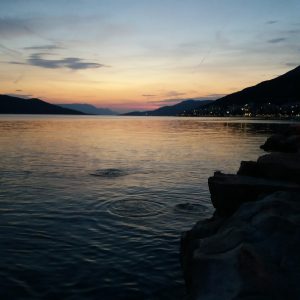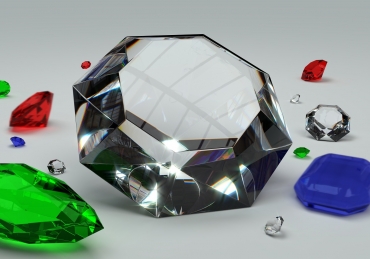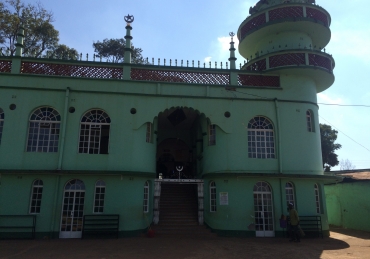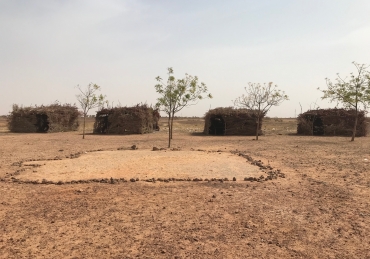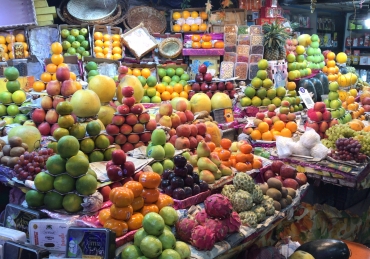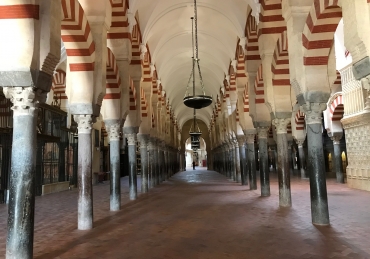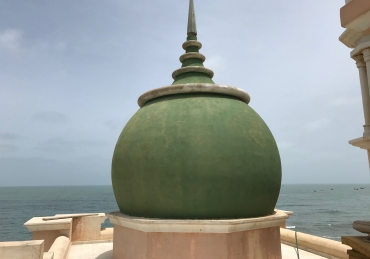Visit to Bosnia, the Paradise of Europe
In the name of Allah, the Compassionate the Merciful
It was less than two months ago that Allah Almighty blessed me with the honour and privilege to visit the Balkan States with colleagues from Muslim Welfare Institute (MWI), a unique journey in the company of many great luminaries including Shaykh al-Islam Mufti Muhammad Taqi Usmani and Shaykh al-Hadith Mufti Ahmed Khanpuri. An account of the journey is available on the following link: http://islamicportal.co.uk/12-day-tour-of-the-balkan-states/.
The entire Balkans region is unique in terms of its natural landscape and scenery along with its Islamic history. From the countries we visited, Bosnia left the greatest impression on my mind for two reasons; first because of the war in the 90s and the resilience and courage of the Muslims in resisting the Serbs, and second the history of Islam and Muslims during Ottoman rule and the centrality of Bosnia in the Balkans in terms of Islamic knowledge, culture, architecture and politics. I thus decided to return to Bosnia with my family and was joined in this trip by Shaykh Muhammad Ahmad of Ummah Welfare Trust (UWT) and his family. What follows is a very brief account of our visit with particular reference to places I did not visit in the previous journey.
Arrival into Croatia
We depart from Manchester Airport in the early hours of 8th August 2018 and board the three-hour Thomas Cook holiday flight to Dubrovnik, a city in southern Croatia fronting the Adriatic Sea.
Direct flights from the UK to Bosnia are expensive particularly during the summer holidays. There are many holiday flights to Dubrovnik and other locations in Croatia which are in close proximity to Bosnia. This significantly reduces the travel costs. We arrive into Dubrovnik and collect our hire cars which we had booked in advance. We decide to head immediately to Bosnia.
Neum: the only seaside resort in Bosnia
After travelling for an hour and a half north on the scenic coastal route, we cross into Bosnia and Herzegovina. Our first stop is the resort town of Neum which is the only seaside resort in Bosnia. We spend a few hours here. Halal food is difficult to find in this area because there are no Muslims living here. The people are generally very friendly. Bosnian Muslims also visit the resort area and one should be careful and avoid judging a person’s faith just by the clothing. During communism, it was prohibited to wear any religious symbol in Bosnia including a headscarf. Today, many thousands of our sisters wear the headscarf al-Hamdulillah and Islam is reviving in these lands. Nevertheless, more Dawah and education activities are required.
Mostar
After spending a few hours on the coast of Neum, we head towards Mostar city, which straddles the Neretva River. It is known for the iconic Stari Most (Old Bridge), a reconstructed medieval arched bridge. We travel from Neum via a local route to Mostar which does not involve crossing into Croatia. However, this is a tricky route through narrow mountainous local roads. Whilst it is very scenic, it is a difficult drive and takes time. It is for this reason, on our return, we took another route via Croatia into Neum, which is much quicker. However, it involves crossing into Croatia, and if you are a Muslim, you could expect to wait for up to an hour. Nevertheless, it is a much easier and quicker route when travelling from Mostar to Neum or vice versa.
We spend three nights in Mostar. During our stay here, we visit the iconic Dervish monastery known as Tekija in Blagaj which is in the outskirts of Mostar. It is nearly 600 years old. It is possible from the opposite side of the river to take a brief boat ride into the cave, which is the start of the Buna river. Some of us take the boat ride.
A couple of hundred yards after coming out of the Tekije compound, to the left behind the shops, there is a small water spring. It is possible to descend and drink water from here. This is discreet but is not to be missed. The weather was 35 degrees, yet the water was extremely cold like refrigerated water.
Our next destination is the iconic Stari Most (Old Bridge). In my previous visit, it was dark when we visited the bridge. It is worth visiting the bridge both during the day and also at night. A professional diver pours a bucket of water over himself and dives 24 meters from the bridge into the cold water below, after collecting donations from the people on the bridge and reaching his target.
There are some beautiful and historic mosques in Mostar. The Karadoz Bey Mosque, for example, was built in 1554 or 1557 and is the largest mosque in the region. The mosque was severely damaged during the Bosnian War in the early 1990s. However, it underwent extensive repairs between 2002 and 2004.
Likewise, the Koski Mehmed Pasha Mosque was built in 1617, it provides an open view of the Neretva River and the Old Bridge. It represents another extraordinary piece of Ottoman architecture, and after the Karadoz Bey Mosque, is the most monumental mosque in the city.
During our stay in Mostar, we meet with Shaykh Jawwad who hosted us when we visited Mostar two months ago. He is an active scholar with a variety of education and Dawah activities. We visit his education institute in the centre of the city which provides Islamic education classes and other activities. The building is rented. All activities are free and it is a struggle to cover the overhead costs. Such organisations deserve support. Shaykh Jawwad is also part of a charitable organisation that aims to tackle poverty in the region. There are pockets of poverty in this scenic city and generally in Bosnia which are invisible to most visitors. Many of our brethren struggle to meet ends. Shaykh Muhammad leads the discussion in relation to how charities like UWT and MWI can provide support here for education and wider charitable initiatives. A fruitful discussion takes place.
Whilst in Mostar, we perform Jumuah Salah at one of the local Masjids. The Masjid is full. The sermon begins in Arabic and is subsequently followed in Bosnian. The theme is Eid al-Adha and Qurbani. We understand that today’s sermon has been prepared and provided by the Islamic Community (http://english.islamskazajednica.ba/), the national religious organisation for Muslims in Bosnia.
Kravica Waterfall
During our stay in Mostar, on one of the days we visited Kravica Waterfall, which is located 25 miles south of Mostar. It is more or less on the way to Neum so can be visited on route to Neum or on return. The waterfall is one of the most beautiful natural sites in Bosnia. The entire area is full of greenery with chaste trees, poplars and figs all around. Even the tuff formations are green with thick lichen, moss and grass all over them. There are hardly any man-made formations near the falls to interfere with the location’s complete natural environment. The waterfall is roughly 25 meters high and separated into 20 falls, with the lake below being about 120 meters in radius. However, it is this small size of the fall that makes it so accessible, unlike most large waterfalls.
Kravica is a popular swimming and picnic area particularly during the summer season. In the central area of the waterfall and the lake, there is a lot of semi-nudity. However, there are quiet areas at a short walking distance that provides privacy for families which can be rented and often used for free. Avoiding the holiday season is better when visiting such places.
When visiting any area in Bosnia, as mentioned in my June visit account, it is important to note the location, its history and demographics. This region which is close to the Croatian border is predominantly populated by non-Muslims. At a local shop at the Waterfall, I mentioned to the shopkeeper that I had read all four gospels of Mark, Matthew, Luke and John from beginning to end and we respect Jesus (Prophet Isa, peace be upon him). She was surprised to hear this and remarked, “Muslims hate us though”. Such comments reflect the divide that exists even today and should not come as a surprise given the atrocities committed against Muslims during the war. It was here in a prison near the waterfall, that some twenty-five years ago during the war, Muslims were forced to drink urine. Now, history is repeating itself in Syria, this time at the hands of Bashar al-Assad, and of course prior to the Arab spring elsewhere at the hands of certain superpowers who claim to be the vanguards of civilisation. May Allah emancipate the entire world from tyrants.
Pocitelj
Pocitelj is a small fortified town located approximately 15 miles south of Mostar. It is situated in between the Kravica Waterfall and Mostar and can also be visited when travelling to and from Croatia. It is on the main highway. The historic town lies on the banks of the emerald green River Neretva. Architecturally, the stone-constructed parts of the town are a fortified complex, in which two stages of evolution are evident: medieval and Ottoman.
There is a mosque here known as the Hajji Alija mosque, which was built in 1563.
The town was strategically important during the Ottoman era and even prior to this. It was badly damaged by Croat forces during the war in 1993. Local Islamic art was lost, the mosque was badly damaged and most of the population fled. After the Dayton Peace Accords in late 1995, fighting ceased, but the town had suffered immensely. Recent reconstruction has returned the town to its original form. Besides its stunning oriental architecture that encompasses all kinds of structures built during the period of 400 years, the town hosts the longest operating art colony in southeast Europe since 1964. Artists from around the world gather here to paint. The town is also famous for its shiny red pomegranates and figs that grow in abundance on its hills.
We visit Pocitelj for a few moments, but are unable to spend much time here. A place to re-visit in the future.
Konjic
After spending three nights in Mostar, we are now heading to the capital Sarajevo. On route, we stop at Konjic, a historic town in between the two cities. The route between Mostar and Konjic is one of the most scenic routes.
Here, we meet up with brother Munir, a veteran of the war as well as an active member of Tabligh Jamat who spent time in Pakistan. Brother Munir hosted us in our previous trip and kindly gives us a tour of his town Konjic.
We visit a graveyard which is home to the bodies of 102 martyrs including a martyr from Pakistan. Pakistan played a major role during the war. Brother Munir shared some of his accounts and mentioned how at times they would hear the sound of the Adhan from the graveyard, a miracle in itself.
We visit the Old Stone bridge in the centre of the town.
A minaret that was damaged by a tank shelling during the war remains damaged, as visible in the image.
Today, for tourists, Konjic is perhaps most famous for rafting. This is a whole day’s activity. A colleague who visited Konjic only a few days ago strongly recommends rafting, however, we do not have the time. We meet with a local brother Tariq who provides a comprehensive rafting service with a Bosnian meal at the end of the day.
Sarajevo
From Konjic, we head to Sarajevo where we spend the next four nights. During our time here, we visit the various landmarks outlined in the account of the trip referred to above: the tunnel, the springs, the old town, the emperor’s mosque, Gazi Husrev-beg Mosque as well as the King Fahd mosque. This time, I had the opportunity to use the iconic Cable Car which was missed during my previous visit. The distance is two kilometres one way and it provides a beautiful panoramic view of the city.
Travnik
On one of the days, we decide to visit Travnik, another historic city which served as the capital from 1699 to 1850. It is 56 miles from Sarajevo. The majority of the route is a toll road motorway. Travnik is located in Lasva river valley, surrounded by Vlasic mountain in the north and Vilenica mountain in the south. It is one of the best-preserved cities. There are twenty-eight protected cultural and historic buildings in this area including the medieval fortress built in the 15th century, Jeni mosque, which is the oldest building from the Ottoman period, Sulejmanija or Sarena (coloured) mosque and Elci Ibrahim-Pasha madrassa.
We begin by having lunch, the Arab Saliq dish, cooked by Shaykh Muhammad’s wife, at the Plava Voda (blue water), a perfect spot to enjoy a meal as the fresh water trickles down the stream with a series of wooden bridges crisscrossing over the water. Relaxing in this environment is one of the best things to do in Travnik after exploring the old town and visiting the fortress, although we started in reverse order.
Our next stop is the medieval fortress, the Stari Grad (old town) castle which dates back to pre-Ottoman Bosnia when the former Christian Kingdom ruled the region. The Ottomans later developed and expanded the castle, transforming it into a fortress with watchtowers. There is a small museum dedicated to its history and an ethnographic section inside the castle. Anyone interested in embroidery should visit the museum section.
The Sarena (coloured) mosque is under repair so we visit it from outside (we meet the Imam the following day as outlined below). However, thanks to two students who are selling magazines by the Plava Voda, we are able to visit the Elci Ibrahim-Pasha madrassa which was established in 1706.
During the communist era, it was closed and used as a market place. Subsequently, it was re-established as a madrasa and today it is an education centre for hundreds of boys and girls who acquire Islamic education here on a full-time basis. There are six such madrasas in Bosnia. The two students share with us the challenge faced by many students to pay the 100 euros monthly fees. It is sad that such students who wish to acquire the knowledge of faith struggle to afford fees. They are the future vanguards and ambassadors of the faith in this region and deserve our full support.
Important Meetings in Sarajevo
On our return from Travnik, brother Munir kindly travels from Konjic and arranges a meeting with Professor Ibrahim Begovic, the Director of Education responsible for all the six madrasas run by the Islamic Community of Bosnia. We are received at the Islamic Community’s Head Office in the Old Town by Dr Nezir Halilovic who speaks Arabic and English and translates for Professor Ibrahim. We learn that there are six madrasas in different cities of Bosnia and there are 5500 students on roll. Approximately 700 students graduate every year on the four-year programme which enables them to progress further unto degree programmes. Many of the graduates become Imams and lecturers. In addition to this, the Islamic Community overlooks the faculty of Islamic Studies at the various universities and also the Religious Education provision in schools. The maktab (supplementary school) provision is minimal. Generally, the religious education provided in schools is regarded sufficient. Whether it is sufficient or not is subject to discussion. A fruitful discussion takes place with Professor Ibrahim and Dr Nezir in relation to possible ways of collaboration including providing support to poor students and exchange visits.
Later in the day, brother Munir arranges a meeting with an active Imam, Dr Hafez Djemail Ibravonic, the Imam of the Sarena (coloured) mosque in Travnik and a professor in the madrassa of Travnik which we visited yesterday. He travels with his family from Travnik to Sarajevo just to meet us. He is a product of the madrassa system and later completed his PhD on Shaykh Khalid Naqshbandi, the famous saint and teacher and mentor of Allamah Ibn Abideen and others, who spent time in India where he acquired ijazah in spirituality. Dr Ibravonic provides an honest appraisal of Islam and Muslims in the country and the various Muslims organisations. We spend several hours with him at the Springs of River Bosna discussing the various challenges ahead and the ways in which we can strengthen Islam and improve the wellbeing of the people through education and charitable initiatives.
Return home
After spending seven days touring various cities of Bosnia, we return to Dubrovnik after a night’s stay in Neum. Our return route from Sarajevo takes us via Konjic, Mostar, Pocitelj and then into Croatia and thereafter back into Bosnia. We stop at a place ten to fifteen miles after Konjic and take a boat trip for an hour, a substitute for rafting. The river is amazing.
There is an opportunity to drink fresh spring water whilst on the boat.
From here, we head towards the Croatia border. It takes us an hour to cross the border. Perhaps it is the first time that a convoy of bearded Muslims dressed in Arab clothes with veiled women are crossing the border, or perhaps it is the routine treatment of Muslims.
After spending a night in Neum, we re-enter Croatia on the morning of 16th August and head to Dubrovnik Airport, from where we board the Thomson flight to Doncaster. The re-entry into Croatia is straightforward and takes a few minutes.
Concluding thoughts
Bosnia is a place worth visiting. During our visit, we saw many Arab tourists. The reason is obvious. It has been described the Paradise of Europe. The country is very clean. Water is readily available. There are plenty of waterfalls, springs, rivers, lakes and water-based activities. There are roadside fountains built long ago for travellers and there are many small springs and streams of sparkling fresh water. An ideal place for nature enthusiasts.
In relation to prices, Bosnia is a much cheaper place than its neighbouring European counterparts including Croatia. Apartments can be booked via www.booking.com and are generally cheaper than hotels and offer value for money particularly for self-catering and for larger families. The food is also cheap. The Bosnian favourite Chevapi kebabs should not be missed. The Pekaras (bakeries) are found everywhere and are highly recommended. In Muslim areas, the food is generally Halal although it is advised to check with the staff. The winter should be avoided unless one wants to ski in the snow-capped mountains.
Above all, there are many mosques, monuments, libraries, museums, graveyards and memorials which provide visitors an insight into the history of the country particularly Ottoman rule and also more recently the war. One should visit with this intention and make the journey an educational trip combined with ascertaining the needs of the local people and the intention to support them. Such intentions should be at the forefront of any journey abroad. Inshallah, over the coming months, with Shaykh Muhammad of UWT and colleagues from MWI, a strategy will be devised to support the people of Bosnia in whatever small way we can. May Allah unite the Ummah and grant it the prosperity and spirituality that existed under Ottoman rule.
Finally, may Allah bless my dear colleague and friend Mufti Muhammad ibn Adam of Leicester, who joined us in our June trip on the Bosnia leg. His five-day account of the trip published this morning on this link prompted me to pen this brief account today.
Yusuf Shabbir
17 Dhū al-Ḥijjah 1439 / 28 August 2018

